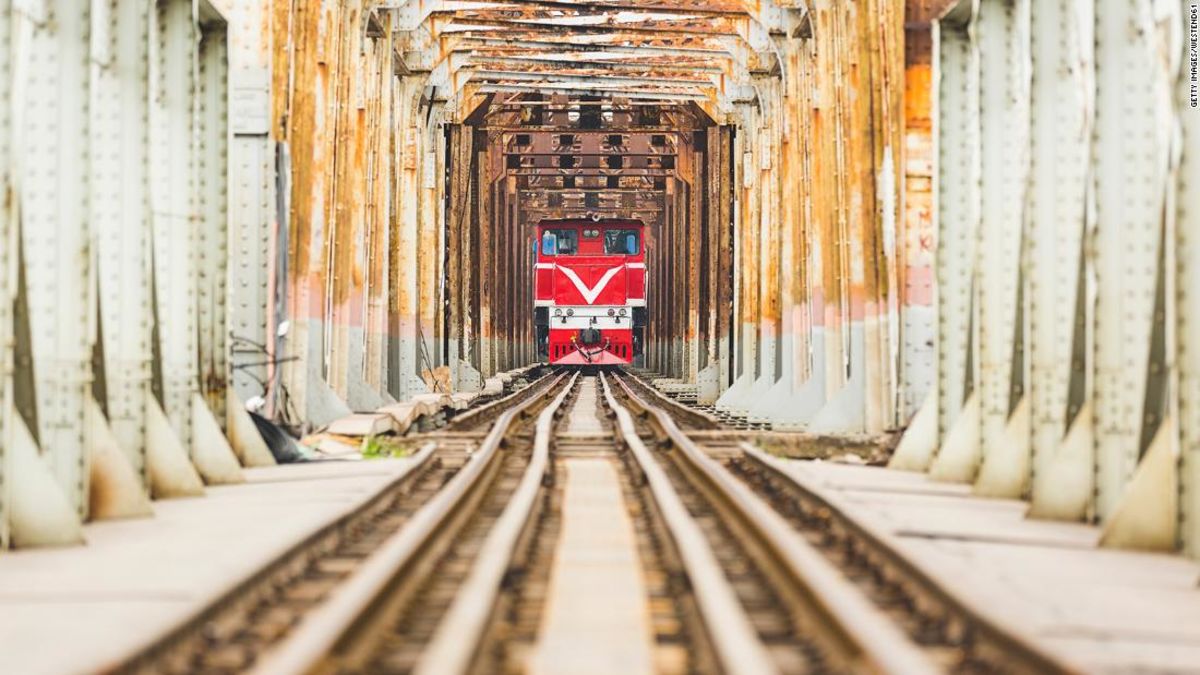Products You May Like
Specific sections of the bridge are marked off for pedestrians, but some overzealous photo-seekers are reportedly climbing over the barriers and onto the train tracks in pursuit of the perfect snapshot.

In this file photo, taken in 2014, a girl in traditional dress poses for photographs on the century-old Long Bien Bridge. According to local media, the bridge is becoming increasingly popular among travelers, too.
HOANG DINH NAM/AFP via Getty Images
“I feel it’s very dangerous, but I want a beautiful photo album so it deserves some sacrifice,” tourist Nguyen Thi Mai Huong, who visited the nation’s capital from the province of Bac Ninh, told VN Express.
The bridge, which spans the Red River between the neighborhoods of Hoan Kiem and Long Bien, was built at the turn of the 20th century. It was originally named after former French president Paul Doumet, as Vietnam was part of French Indochina at the time.
Its important role connecting two parts of Hanoi made the bridge a target for bombing during the Vietnam War, which is known in Vietnam as the American War.
It is still in use, with dozens of trains crossing it every day. In addition, many Hanoi residents commute on it, mostly via motorbike. This can create problems or cause accidents when photo-takers have to weave through traffic to get their perfect snapshot.

A Vietnamese woman walks on the century-old Long Bien bridge in Hanoi.
MANAN VATSYAYANA/AFP/AFP via Getty Images
She tells CNN Travel that she had not heard about the Long Bien Bridge before she arrived, but visited it as part of a “small and intimate cyclo tour.” Vaz adds that most of the photo shoots she saw taking place on the bridge were wedding or engagement photos for locals.
“The first time I went, there was no one there. The second time I went was about nine months later in 2018 and I saw just a handful of people,” she tells CNN Travel.
‘Train Street’ popularity forces officials to act
If history repeats itself, the bridge’s newfound popularity may force officials to step in over safety fears.
in mid-October, Hanoi’s city government decided to close down all the track-side cafes on “Train Street.”
Located in Hanoi’s Old Quarter, the colonial-era train tracks are just inches away from many homes and businesses, creating a dramatic effect, especially when trains go by.
Some visitors skirted danger by trying to snap photos of themselves in front of trains or jumping out of the way just as one skittered down the tracks.
The boiling point apparently came on Sunday, October 6, when a train traveling through Hanoi was forced to re-route because there were too many tourists on the tracks, which were built in 1902 by the French.

